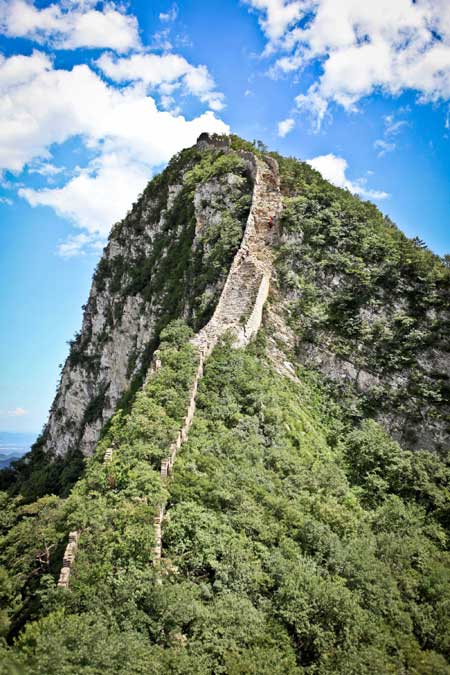Dangerous and beautiful
 |
|
People fall from the watch tower named "the eagle flies facing upward" and die nearly every year. [Photo provided to China Daily] |
Weekend Excursion
Climbers die almost every year attempting to tackle this remote part of the Great Wall.
Only after you conquer the challenging Jiankou Great Wall will you understand the true meaning of the popular Chinese saying that goes, "He who has never been to the Great Wall is not a true man."
As an unprotected wild Great Wall section, Jiankou has become a photographic hotspot and hiking destination for its picturesque views and precipitous mountains in recent years.
The 20-kilometer long Jiankou, which lies to the west of Mutianyu Great Wall, was built in Tang Dynasty (AD 618-907) and Ming Dynasty (1368-1644) with large white dolomites.
It was called Jiankou, which literally means arrow nock, because the long and winding Great Wall on the mountain looks like a W-shaped archer's bow and the collapsed ridge is just like the back end of an arrow.
It's different from the more famous Badaling and Mutianyu Great Walls in Beijing, which are well-renovated with gentle slopes and frequented by tourists of all ages.
Weathered by years of wind and rain, Jiankou has fallen into disrepair with steep cliffs and rough steps, making it one of the capital's most well-known outdoor places for its sense of danger.
"Some tourists have fallen to their deaths accidentally because they are not familiar with the landform. It's better to climb Jiankou with experienced people," says Zou Yi, 53, who organizes outdoors enthusiasts to visit Jiankou every Saturday and take away the rubbish left by others to protect the environment. The group members call themselves "the Giant Gooo-go Great Wall", and they guide me to Jiankou.














